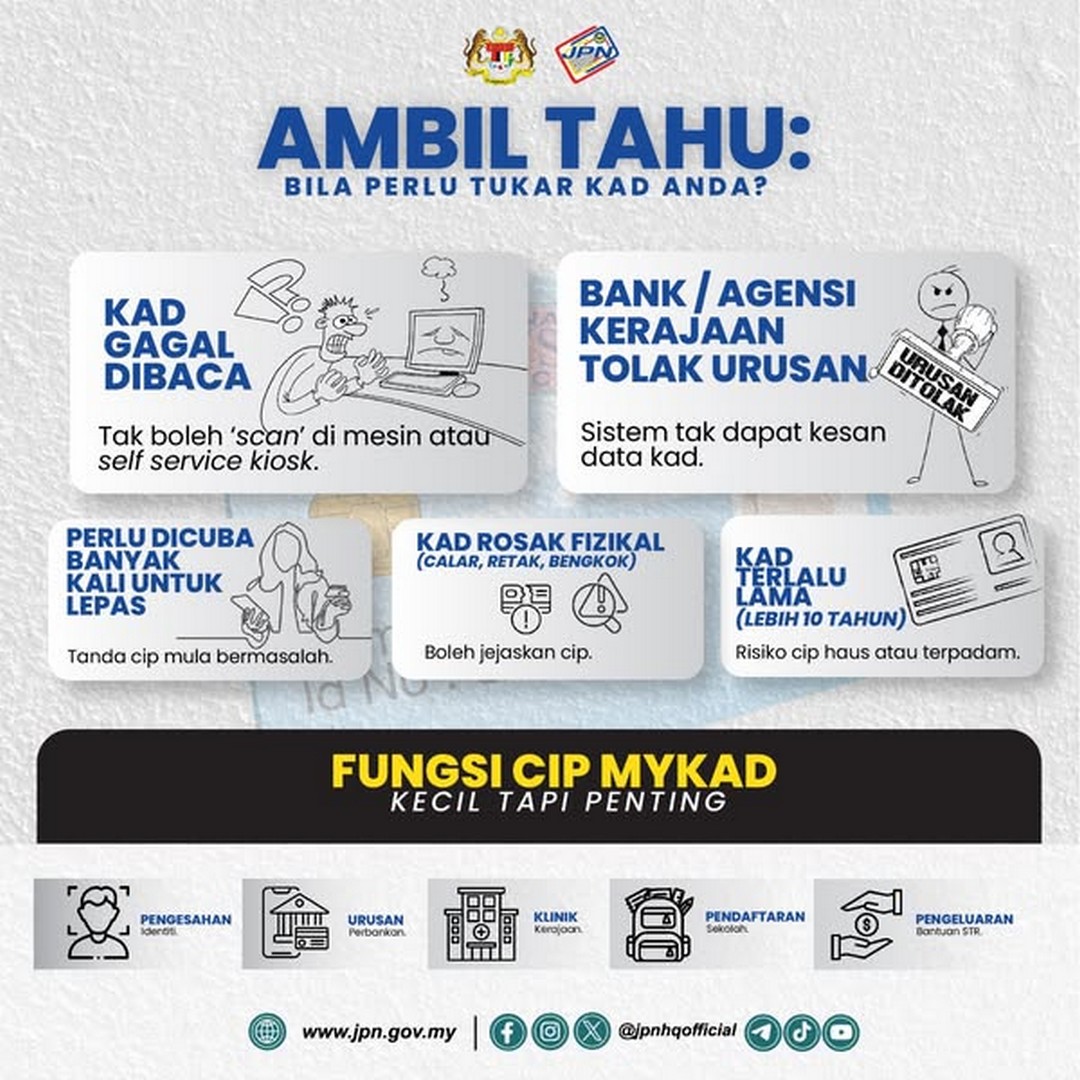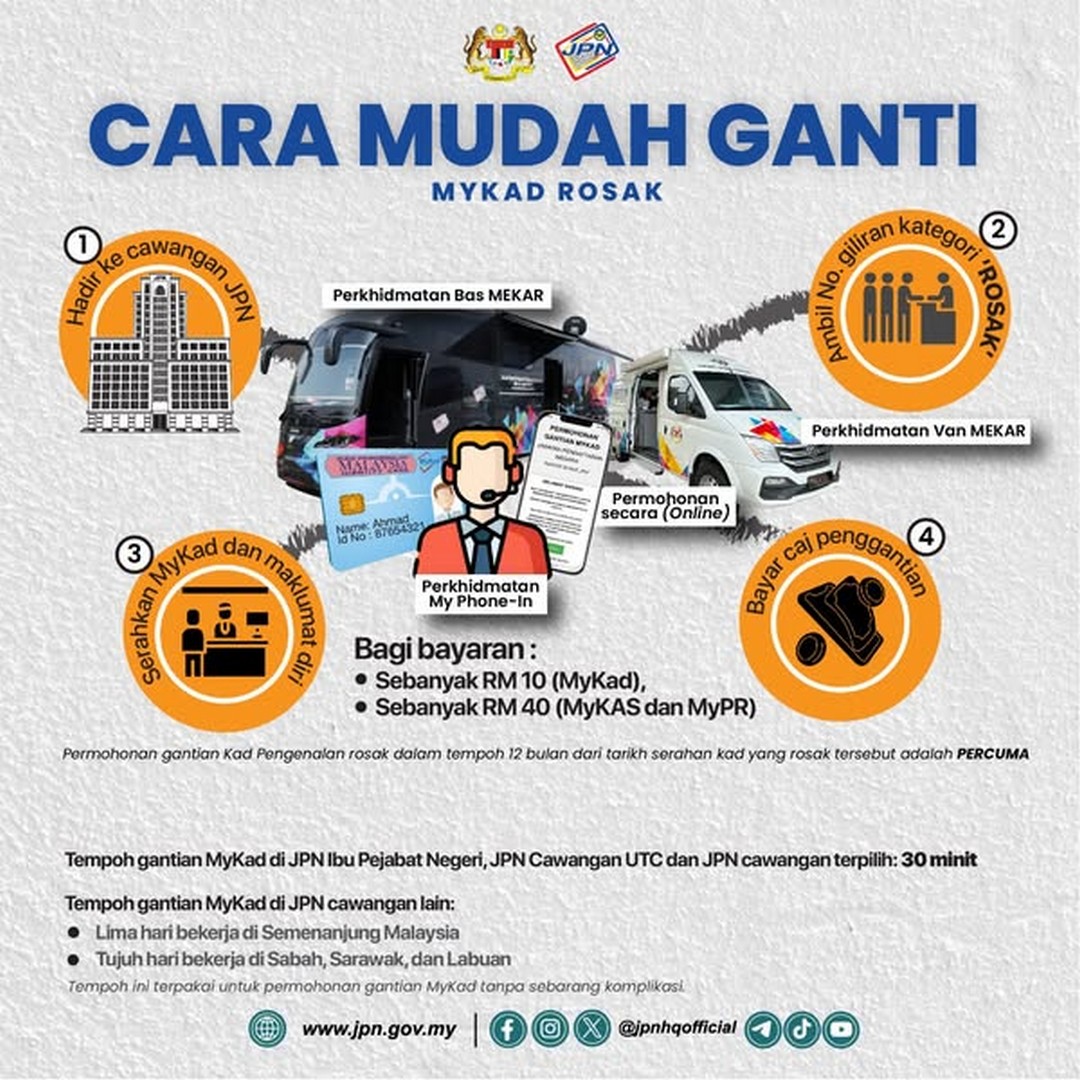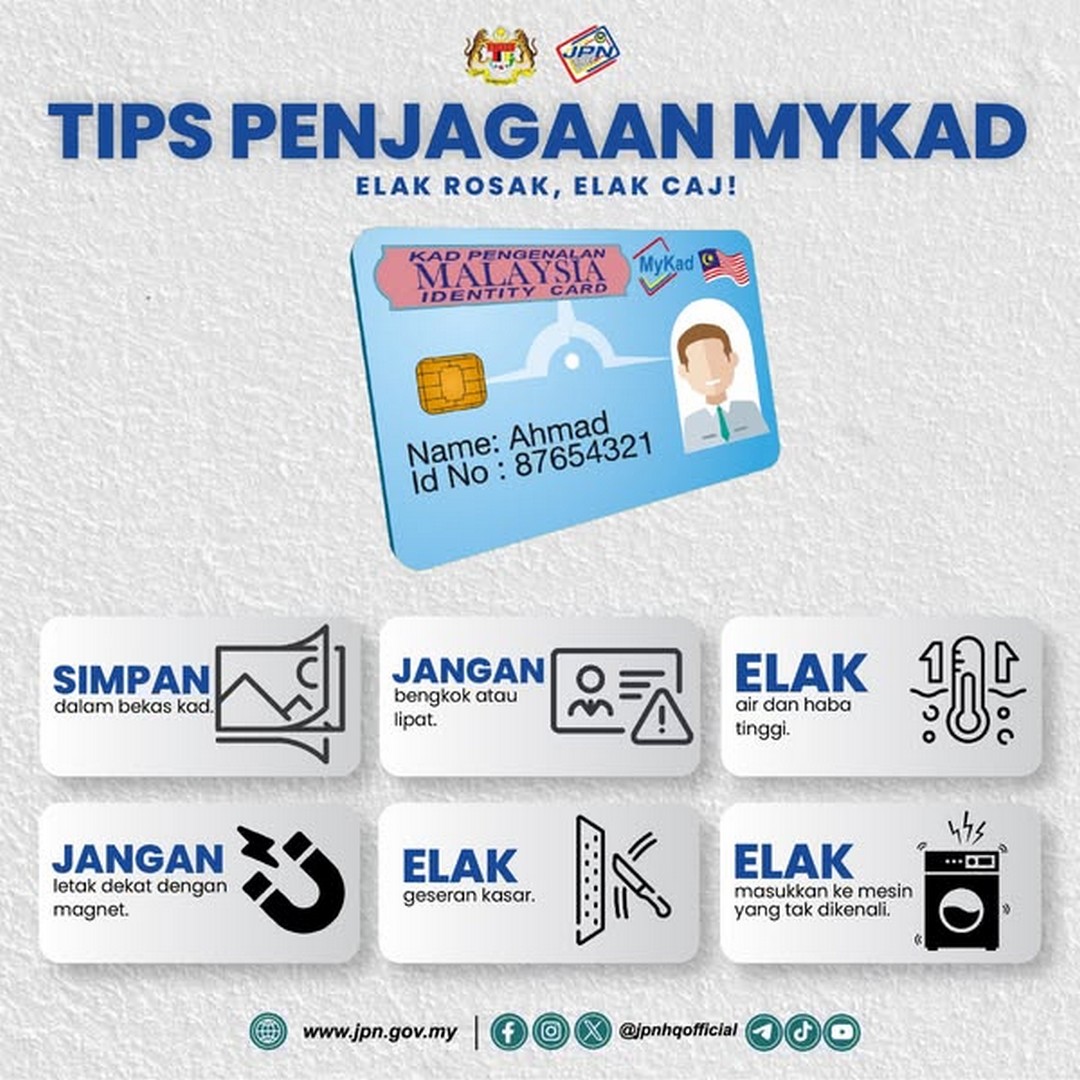In Malaysia, the MyKad is not just another identification card. It’s an essential part of everyday life, serving as proof of identity, driver’s licence, access to healthcare, ATM capabilities, and more. From opening bank accounts to verifying purchases and accessing government services, the MyKad is central to modern Malaysian society. So, when it gets damaged or becomes unreadable, panic tends to set in. But there’s no need to stress.
Thanks to the Ministry of Home Affairs (MHA), Malaysians can now get clear guidance on what steps to take if their MyKad is damaged. In a recent public information campaign under the #AmbilTahu series, they are rolling out easy-to-follow information on how to inspect, replace, and maintain this all-important identity document.
This campaign isn’t a typical sale or promotion in the traditional sense—it’s a public awareness initiative that saves people from unnecessary expenses and wasted time. For those looking to avoid the RM10 or more typically charged for card replacement, this is the kind of proactive knowledge that can make a real difference.
So, what’s this all about, and why should people care?
Let’s dive into it.
Why Should People Pay Attention to Their MyKad Condition?
The MyKad, though designed to be durable, is still susceptible to wear and tear. Cracked plastic, a malfunctioning chip, or even physical breakage can render it useless at the most inconvenient times—at banks, airports, or government service counters.
Many have discovered the damage only when it’s already too late. That’s why the MHA is urging Malaysians to check their MyKad early and regularly.
The campaign starts by encouraging everyone to look for visible signs of damage. These include:
-
Chips that can no longer be read by scanning machines
-
Cracks on the plastic surface
-
Fading print that may interfere with identity verification
A quick visual inspection could save plenty of hassle down the line.
What to Do If the MyKad Is Damaged?
The Ministry has laid out a streamlined guide for anyone whose card is damaged. These instructions are meant to reduce unnecessary queueing at the JPN (National Registration Department) counters and ensure a smooth process for those in need.
Here’s how it works:
-
First, Confirm the Damage:
There’s no need to head straight to the counter just to check if a card is still usable. Assess the chip functionality and physical state of the card. -
Know the Steps to Replace It:
If you find damage, don’t panic. A replacement is easily available. The MHA has shared detailed steps on how to apply for a new one. These include filling out a replacement application and heading to the nearest JPN office with the required documents. -
Take Preventive Measures:
For those whose MyKad is still in good condition, the Ministry advises everyone to care for their cards using a few simple steps:-
Keep it away from heat or strong magnetic sources
-
Store it in a protective holder
-
Avoid bending or exposing it to rough conditions
-
Proper care can ensure the card remains in working condition for years, sparing people from having to fork out money for a new one.
A Promotion Worth Talking About – Knowledge That Saves You Money
This initiative by the Ministry of Home Affairs may not come with vouchers or discounts, but the value it offers is undeniable. For many, especially students, senior citizens, and low-income households, even a small RM10 fee can be burdensome when unexpected.
By spreading awareness and encouraging regular self-checks, this campaign helps people prevent those avoidable costs. Additionally, by reducing the number of people heading unnecessarily to the JPN counters, it helps improve overall efficiency at government offices. That means shorter wait times for those who truly need assistance.
For a country as digitally connected as Malaysia, it’s also a step in the right direction toward smarter public service communication.
The Bigger Picture – Government Services Made More Accessible
The #AmbilTahu campaign goes beyond just the MyKad. It’s part of a broader push by the government to keep Malaysians informed, empowered, and prepared. Rather than reacting only when issues arise, Malaysians are now encouraged to take early action.
This specific promotion is also a reflection of how public service messaging is evolving—clear visuals, concise language, and step-by-step breakdowns make it easier for everyone, including non-tech-savvy individuals, to understand.
Whether people are young adults holding their first MyKad, parents looking after their children’s cards, or elderly citizens unsure of the chip’s condition, the campaign is made accessible and relevant.
So, Why Should People Care?
Many don’t think twice about their MyKad—until it suddenly fails them. That’s exactly what this awareness promotion is trying to prevent. By taking just a few minutes to inspect the card and following the tips provided by the Ministry of Home Affairs, one can:
-
Avoid unexpected fees for replacements
-
Prevent delays in accessing services
-
Ensure peace of mind when dealing with official matters
-
Learn a simple but essential life skill that can help family members too
Ultimately, the Ministry’s push for better public awareness is both practical and timely. In a fast-paced world where everyone has a million things to handle, knowing that something as small as checking the chip on an ID card can help save time, money, and stress is something worth talking about.
This is the kind of informative campaign that people should take a moment to share with friends and family. It might seem like a small matter—but it’s the small steps that often save the biggest headaches.
Promotional/Event Details:
Date: 28 July 2025 onwards
Time: Anytime (Public Awareness Campaign)
Venue: All locations under the Ministry of Home Affairs Malaysia and National Registration Department (JPN) branches
More Info: Visit https://www.moha.gov.my

EverydayOnSales help brands connect with our community, the largest warehouse sales consumers database in Malaysia. Advertise with EverydayOnSales Malaysia.




